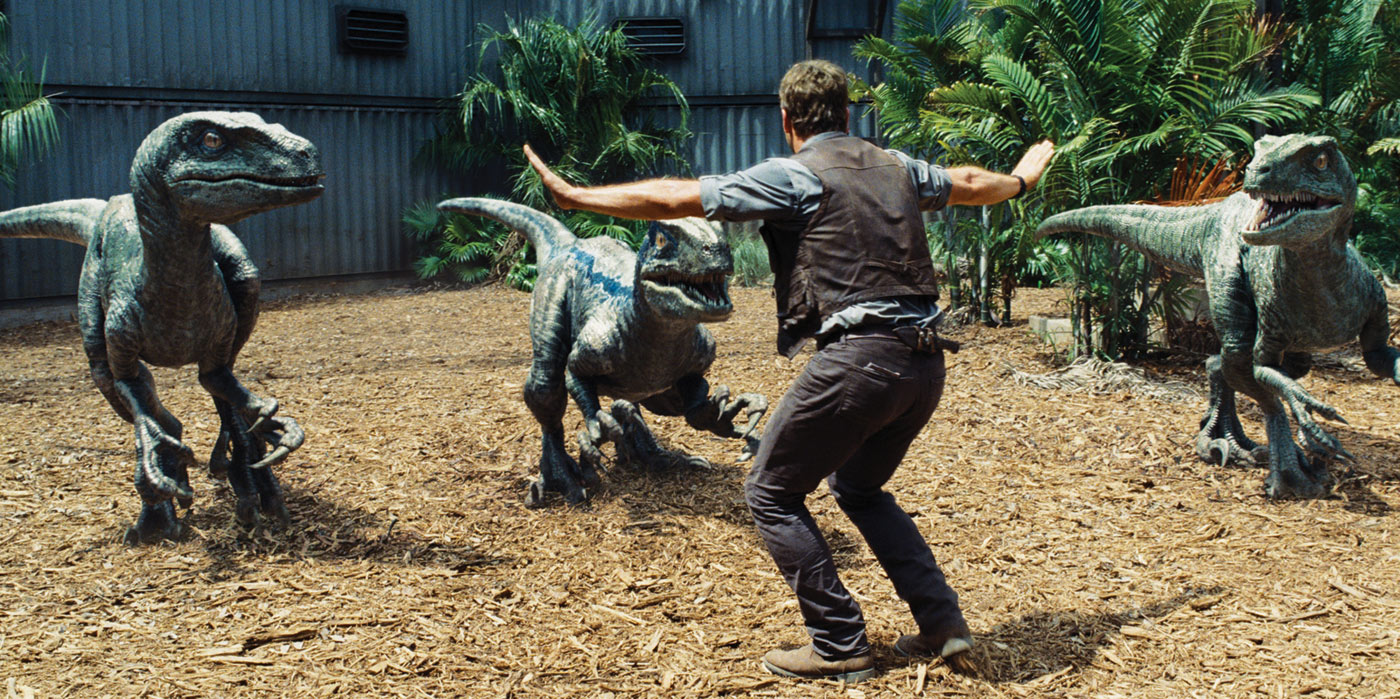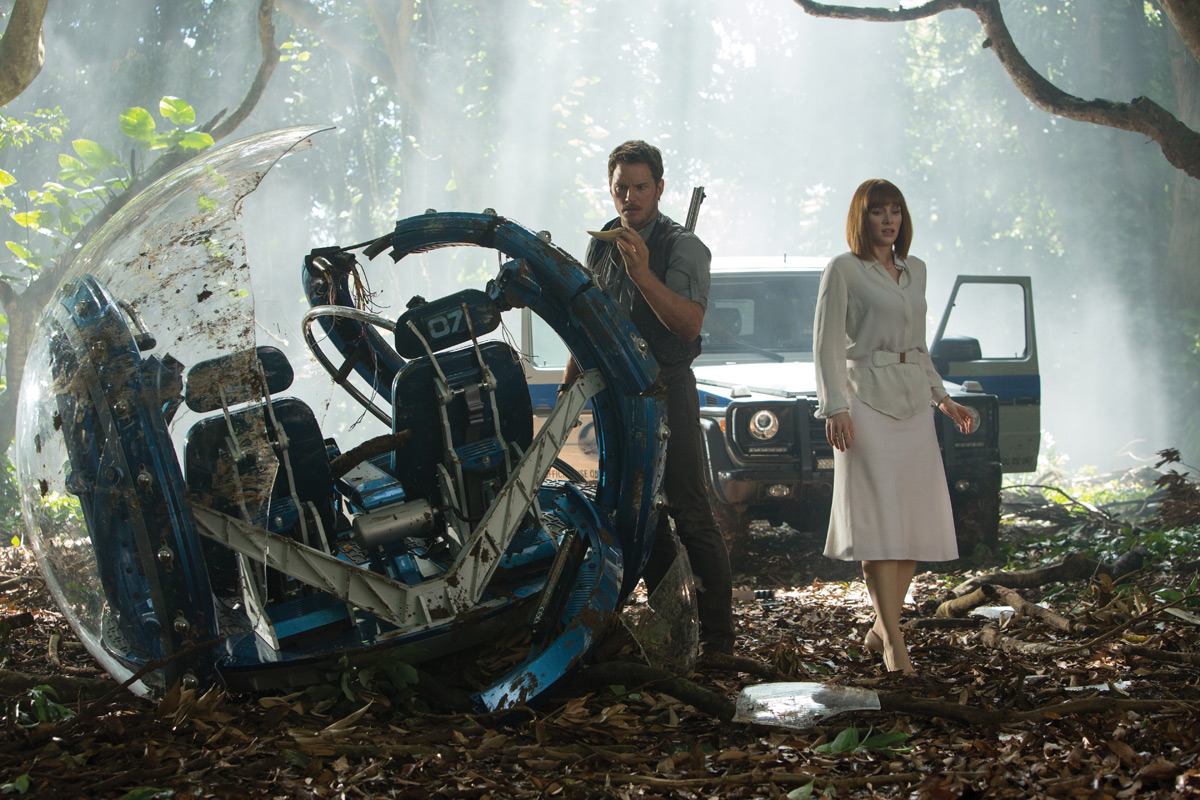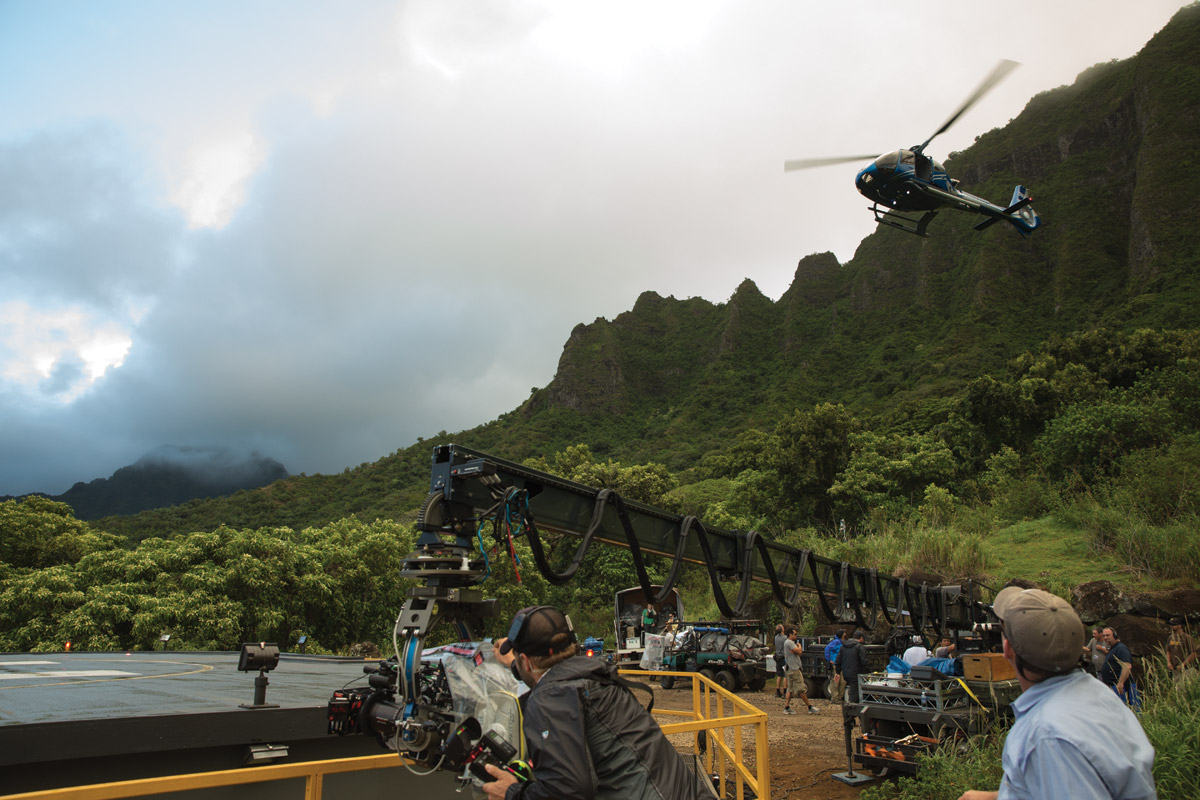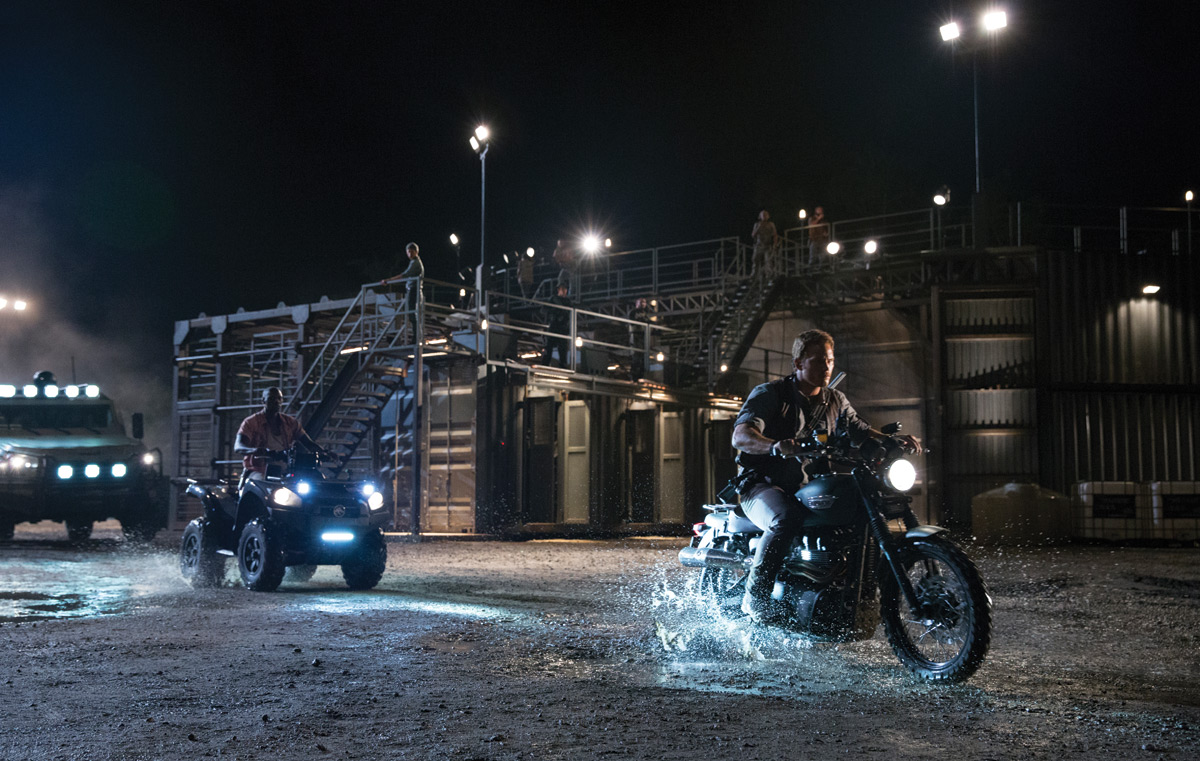John Schwartzman, ASC, returns to paradise (run amok) with the fourth installment of Steven Spielberg’s epic action franchise
More than two decades ago, Steven Spielberg introduced filmgoers to living, breathing photo-realistic dinosaurs in his landmark roller-coaster action ride, Jurassic Park. Now, with Universal’s fourth entry in the franchise, Jurassic World, director Colin Trevorrow and director of photography John Schwartzman, ASC, return to the idyllic Isla Nubar, with technology and moviemaking advances even Spielberg might not have foreseen in 1993.
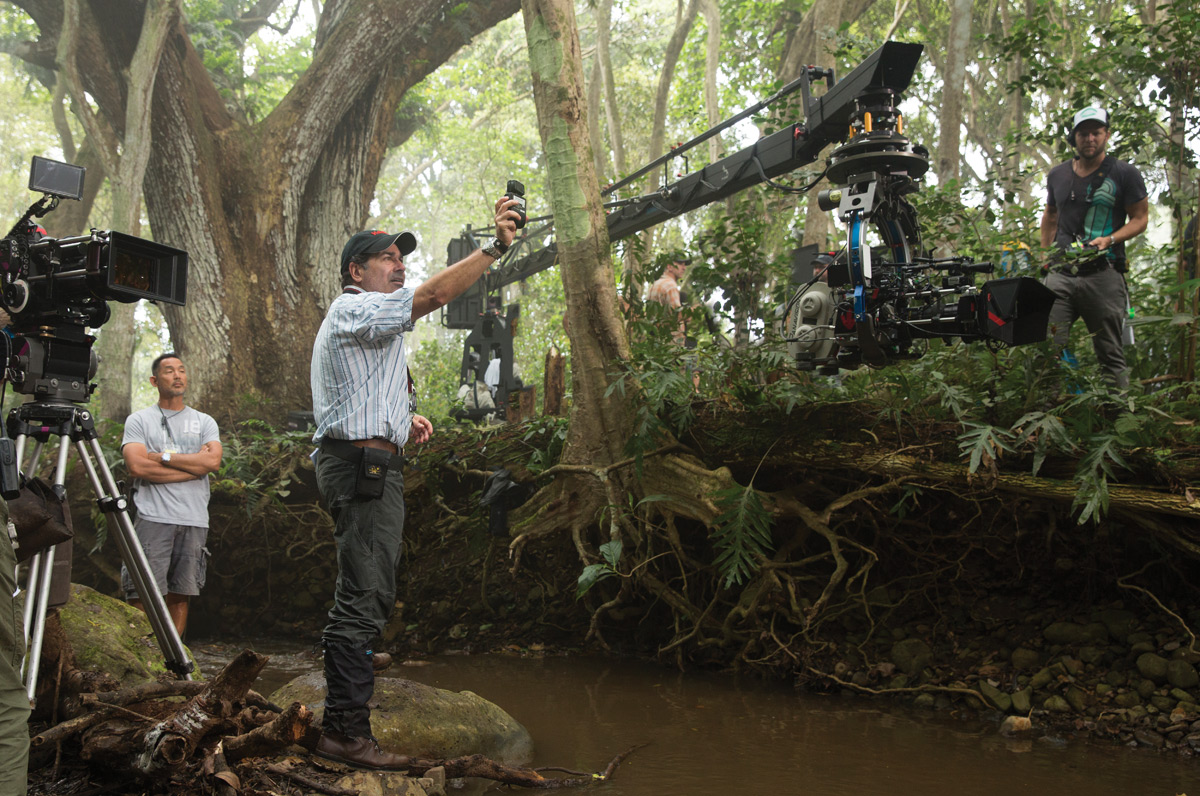
Two decades later, Jurassic World is now a smoothly running theme park, located on the same postcard-perfect little island off Costa Rica. These days, visitors can easily traverse the park on a variety of vehicles, including the ultracool GyroSphere, a two-person glass hamster ball. Guests get to mingle with plant-eating dinosaurs, similar to California’s real-life San Diego Wild Animal Park setup, and all is well in this now corporate-run prehistoric playland.
Or is it?
Advancements in dinosaur rebirth science have continued via Claire Dearing (Bryce Dallas Howard), and her genetically modified T. Rex, dubbed “Indominus Rex” (or “D. Rex” for short), combines DNA containing all the scariest traits of its Jurassic companions. Add to this mix the theme park’s chief dino-wrangler, Owen Grady (Chris Pratt), in charge of training the always-volatile Velociraptors. When Dearing’s nephews arrive on the island for a visit with their aunt, the genetic mutant, D. Rex, escapes from its pen, and with the boys off exploring on their own, all hell breaks loose.
Spielberg handpicked Trevorrow after seeing his Sundance indie hit Safety Not Guaranteed, a quasi-sci-fi romance made for around $700,000. The jump up in class may seem incongruous, but as producer Patrick Crowley [see Exposure, page 28] notes, despite its tiny budget, “[Safety Not Guaranteed] was an Amblin-style movie. There’s a supernatural aspect shaping the characters. And since Steven sees himself in a lot of young directors, he’s willing to take a chance when he sees talent like this.”
As for Schwartzman, Trevorrow loved action hits like Armageddon, and brought the former on in the spring of 2013 for a planned 2014 release. When the project was pushed a year due to script tinkering, Schwartzman went off to shoot Dracula Untold before returning in early 2014 to begin preproduction. Shooting began in Hawaii (Oahu and Kaui), before moving to New Orleans and the massive stages at NASA’s Michoud Assembly Facility (where Apollo’s famous Saturn rockets were built), with other outdoor sets at the nearby former Six Flags parking lot.
Schwartzman brought on many of his trusted Local 600 team members, including A-camera operator Ian Fox and B-camera/Steadicam operator Chris Haarhoff, SOC, along with longtime Key Grip Les Tomita. Veteran Guild shooter Patrick Loungway, who had just come off Dracula Untold with Schwartzman, handled 2nd Unit, although that work was limited (as was B-camera shooting due to Trevorrow’s preference for single camera) mainly to the film’s large and complex action scenes.
Per usual, Schwartzman shot on film with Panavision cameras – XL2s and his favorite from The Rock, his own Platinum 452 – as well as with a large-format Panavision 65 mm for capturing wide establishing shots. “We had an allotment of 65-millimeter film,” Fox recalls, “and we maxed it out. It was beautiful to see those cameras back on set again.”
Film stocks included Kodak 5205 (50D), 5213 (200T) and 5219 (500T), partially in an effort to maintain consistency with the previous three films. “Steven wanted to keep it in the same family,” Schwartzman explains. “But I also lobbied for film because Hawaii is such a high-contrast environment – you’ve got very dark greens in the jungle with very, very bright white clouds. And film can handle more contrast than digital.”
Jurassic World was slated for native 3D capture, but after the production delays, Universal opted for a 3D post conversion, performed by Stereo D, following color timing by Stefan Sonnenfeld at Company3.
“I told Colin the only way to make a movie that you’re going to convert to 3D is to make the best 2D version you can,” Schwartzman recounts. “We can’t have one foot on the platform and one foot on the train; let’s utilize the nuances we have in 2D, like long lenses and lens flares, that will help ground the audience in the moment.”
The DP also wanted to shoot anamorphic (2.40:1), while Spielberg was leaning toward 1.85:1, due to the presence of many tall dinosaurs. Trevorrow suggested a compromise – 2:1 – applying Vittorio Storaro’s Univisium concept. “It’s exactly between the two ratios,” the director explains. “It allows for a sense of scope, while giving us the height to have a human and a dinosaur in the same frame.” It also allows viewers to watch comfortably on portable digital devices, one of Storaro’s main objectives of the format. “And, on the flip side, all digital IMAX screens in America are native 2:1, so we’ll fill it completely,” Trevorrow adds. “No switching back and forth between ratios.”
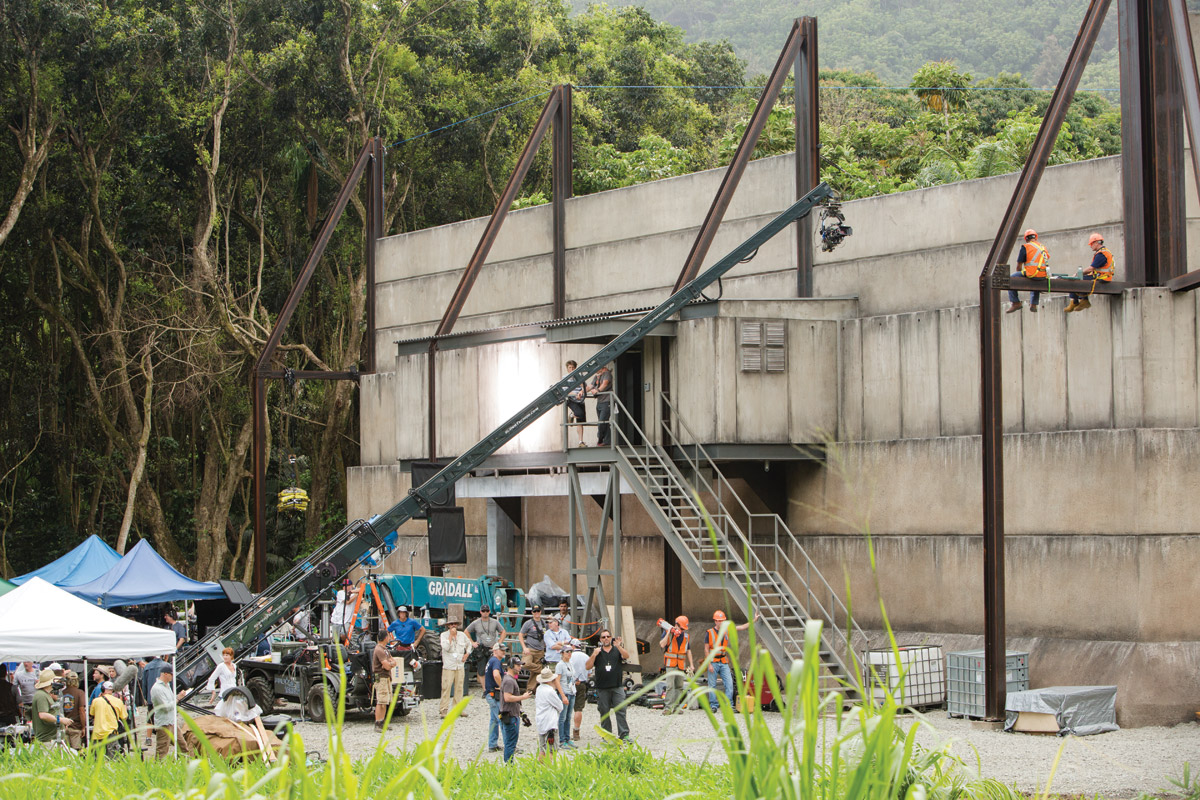
A key part of the look of Jurassic World is the use of long, complex master shots with very little coverage – much like those used by Trevorrow’s directing mentor. “These films have a certain cinematic language,” he continues, “and we tried to do it just enough to make people feel like they’re watching a Jurassic Park movie.” That language incudes “many pieces of information in a single shot, with the camera moving to cover each of these pieces of information. It’s the kind of filmmaking that I grew up loving. How much of this story can we tell in this one well-designed shot?”
As Schwartzman confirms, the shots were epic without the safety net of coverage. “I would always say, ‘Hey, Colin, what about if I throw a B-camera over here, and we just punch in and get a piece of Chris Pratt?” Schwartzman laughs. “And he’d go, ‘You know. . . I’m never gonna use it.’ Finally, about halfway through the movie I realized, ‘This guy knows exactly what he’s doing.’ It was a very bold way to direct, and it paid off.”
The best tool Trevorrow discovered for his big-budget debut also happens to be Schwartzman’s favorite: a 50-foot Technocrane, which the DP has carried, along with a 15- and 30-foot Techno, on his last seven movies. “On any big movie now, I live on it,” Schwartzman shares. “I use it as my dolly.” Libra heads were employed, because as Fox notes, “they minimize vibration or interference, and take out all the bumps and kinks.”
Fox operated camera and crane with the assistance of dolly grip Alan “Moose” Schultz, Technocrane technician Derlin Brynford Jones, Libra technician Adam Austin and 1st AC Tucker Korte. “They’re the best machine you’ve ever seen,” Schwartzman boasts of his camera crew. “They understand each other, and how to move and how to make adjustments. It’s why I fight to get them.”
Trevorrow’s workflow included coming over to the Techno console to “look at different ways to do the shot – extending the crane, changing the focal length of the zoom, et cetera. Little by little, he and John would build the shot from a blank canvas,” Fox describes. “It was not your typical ‘put a 50-foot Techno up in the air and shoot high and wide,’” Schultz confirms. “There were very few shots where we parked it in the sky.”
Schwartzman details how he used the Techno to the film’s full narrative advantage: “I would follow the boys, running behind them, starting very low, right on their heels. And then I’d suddenly do a quick rise up, as they’re running through the grass, and swing around and see what they were running from, and we see the dinosaurs chasing them from behind. Sometimes we would follow Bryce Dallas Howard in the Control Room as she walked up the set, which was tiered. The crane’s ability to come up and over and around things makes the action incredibly dynamic.” As a base for the crane in the muddy Hawaiian locations, Schwartzman used an all-terrain vehicle, made by a U.K. firm, Bickers, and available in L.A. from ProCam.
Jurassic World includes several crane shots that have become a Steven Spielberg trademark – staring from high up or out, and quickly pushing into a subject’s face as the person realizes, for example, he’s about to be eaten by a dinosaur. “It says a lot when someone can have a shot that only reminds you of him,” Trevorrow says of such moves.
Fox feels the approach makes for more intimate filmmaking. “The viewer sees a single human reaction, and, if it’s technically well-executed, it becomes a very personal moment,” he relates. Adds Schultz, “[The crane push-ins are] attention getters because you’re in such close proximity to the actor. I never worry about hitting them, but young actors, a lot of times, aren’t used to being around big equipment, so you need to make them feel comfortable and not in any danger.”
Trevorrow and Schwartzman had detailed storyboards prepared for every action sequence by veteran storyboard artist John Coven, who Schwartzman says, doesn’t just draw cartoons. “You give him a lens size and description, and he gets it,” the DP marvels. “He really understands filmmaking.”
Previsualization was only prepared for two extremely complex scenes – an end battle between a D-Rex and T-Rex, and a scene in which the Pteranodons (the winged, flying Pteradactyls) breach the dome that contains them and escape. The latter was prepared by ILM and led by Visual Effects Supervisor Tim Alexander, who numbered each sequence’s board, and then went through them with each department to determine who would do what and, most importantly, how much could be done in camera.
“On a film like this, which is very Earth-based,” Alexander explains, “we didn’t want to create large set pieces if we didn’t have to.” Notes Stunt Coordinator Chris O’Hara: “You still need an actor and you still need practical effects, because you don’t want to build the whole environment in CG like a cartoon.” Haarhoff agrees, adding that “you’re gathering stunts, VFX and practical effects, so whenever you can have the real thing – like a tree shaking – it helps to sell the visual effect.”
Sorting out VFX on-set – particularly tricky for action sequences in which the key CG predators are not there to interact with actors or camera – made Alexander’s role essential. “Other than the director and the DP, Visual Effects Supervisors are the only ones who have visualized the entire film in their heads,” Fox observes. “I would consult with Tim a lot on things like: ‘on this chase, behind the car, is there a Raptor in front, is there a Raptor behind? Should I leave room in the frame for this Raptor?’”
Today’s sophisticated digital VFX, which were not present on the first Jurassic, have freed-up the camera for more realistic motion. “I started in visual effects 25 years ago at ILM, when a matte shot was locked off and you’d pour concrete for the tripod,” Loungway reflects. “Now, you can go handheld – or if there’s spray on the lens or a lens flare, they tell us, ‘Yeah, no problem – keep shooting, it’s great.’ The days of the VFX guy being the killjoy on set are pretty much over, which is pretty exciting.” Adds Alexander: “We try to have as small a footprint on set as possible. If I see something that will be a real problem, I flag it. But, in general, we’re here to help the filmmakers get the shots they want.”
Of course, sometimes a little physical human help is required. In a scene in which Chris Pratt’s character finds himself surrounded by Raptors inside the large-scale Raptor Arena, interpretive jazz dancers were put in gray suits and given Raptor-head helmets to effectively interact with both the actor and camera. Filmed by 1st Unit, with Haarhoff on Steadicam, the “gray suits” would act out appropriate Raptor behavior, under supervision of ILM Animation Director Glen McIntosh.
“Colin would decide what their action was going to be, move them around,” Fox describes, “and the camera would respond as we were blocking it, either bringing them closer, or being over them. It’s an interplay between Pratt and these characters, and you have to understand what’s happening in that space.”
Haarhoff says the dancers “tied Chris Pratt directly to the circling raptors. We would reference the dance of the second team and then shoot it with only Chris Pratt on film,” he explains. “I think it helped John and his crew to have them there,” Trevorrow adds. “It’s easier to generate the kind of emotion he gets into his images if we actually know what’s going on.”
Nonetheless, seeing such characters roaming around the set acting like dinosaurs couldn’t help but make for the occasional chuckle. “Honestly, it kind of looked like some theater of the absurd,” Fox admits. “But it was really helpful.” [The dancers were later replaced by MoCap performance-driven animation, shot on ILM’s Motion Capture stage during post.] ILM also provided an on-set tool which allowed Schwartzman and his operators to hold an iPad up on set and see the dinosaur characters in place, while trying different lenses and lensing approaches, much like the commonly-used Artemis Director’s Viewfinder. “I would hold up the app, set the dinosaur in and show it to everybody,” Alexander describes. “It’s great for the [camera] operator, because he can see the environment and go, ‘Oh, that animal’s really tall, I’d better tilt up.’”
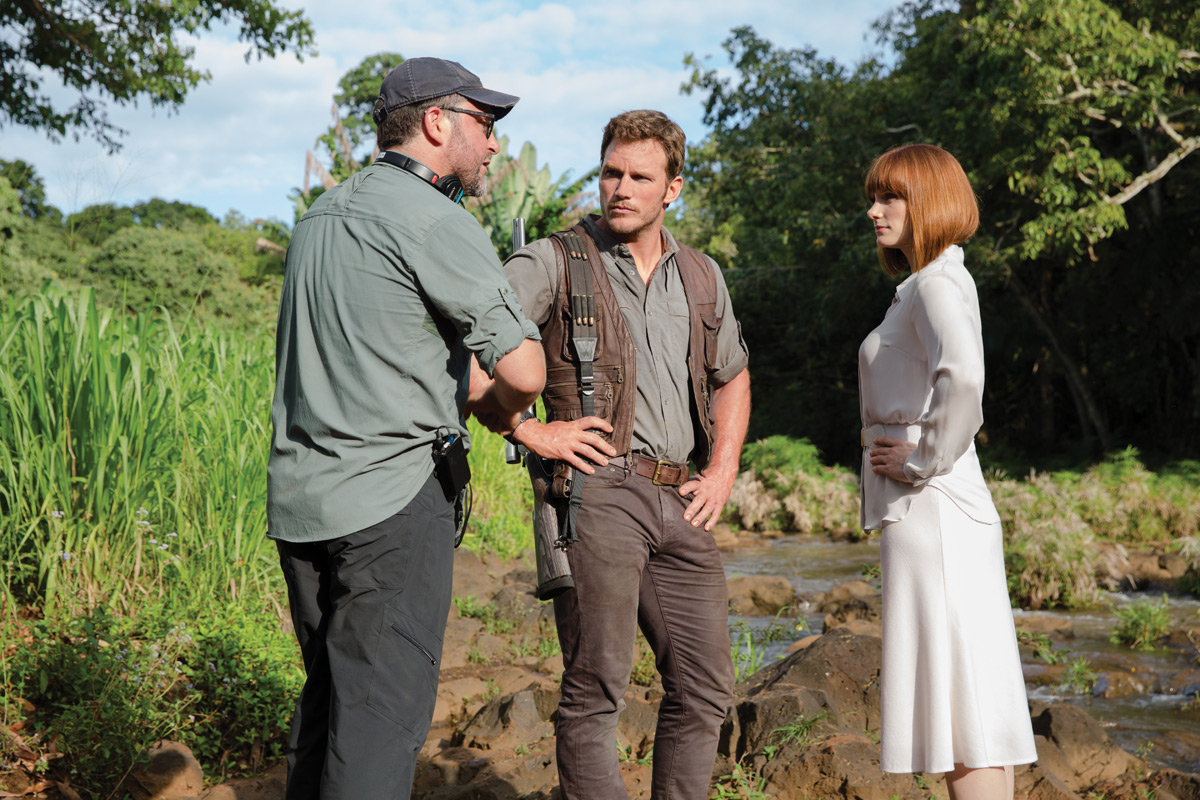
Jurassic World’s camera team (and every other department) experienced what Trevorrow calls “faith-based filmmaking” (shooting for characters that don’t exist) for one particularly frightening scene, in which the escaped Pteranodons rain down an aerial attack on a crowd of 800 extras on the film’s Main Street set, built at Six Flags.
The point of view of the flying creatures was provided via a Spydercam system. The setup is programmable, so Trevorrow and Schwartzman worked with SpyderCam operator Todd “Hammer” Semmes, who worked from a previs Schwartzman had made in Maya. “It wasn’t just a simple glide,” Fox recalls of the move, which required a series of runs to perfect. “We’d have to pick a lens and make adjustments in speed, height or distance to certain objects. They’d also give it nuances, to give character to the POV of the Pteranodon.” Notes Schwartzman, “You can program stops and other moves, which is amazing,” along with other movements, courtesy of a Libra head.
Another complex shot within the sequence featured the Technocrane sweeping from individuals in the crowd, then to a plate image, after which the crane’s base was moved, and the shot would continue sweeping to other crowd members – all of which would be assembled in editorial to make a single jaw-dropping master.
Yet another section of the same action set piece involved a single 360-degree Steadicam move by Haarhoff, who is shooting a major stunt that actress Katie McGrath performed herself. McGrath’s character, Zara, is running with the fleeing boys, but is picked up by a Pteranodon, fought over by another, and then dropped into a nearby lake.
McGrath was hoisted 25 feet into the air by a pair of bungee cables, stealthily attached to her by stunt team members hidden in the crowd. “We precede them through the crowd,” Haarhoff describes, “and then we circle, to get their confused environment. As we wrap around them, in that moment and as we’ve left her, she’s getting hooked up. Then the stunt guys peel out of frame just as we come around and she’s lifted up. It was a really creative way to do it, something Colin came up with.”
“There’s something about the violence of the way that lady gets picked up and dropped into the water,” Trevorrow concludes. “There are plenty of moments in this movie that are very scary involving CG dinosaurs. But I think the scariest moments are when you see something happen to a real person.”
by Matt Hurwitz / Unit photos by Chuck Zlotnick / VFX images Courtesy of Universal Pictures

